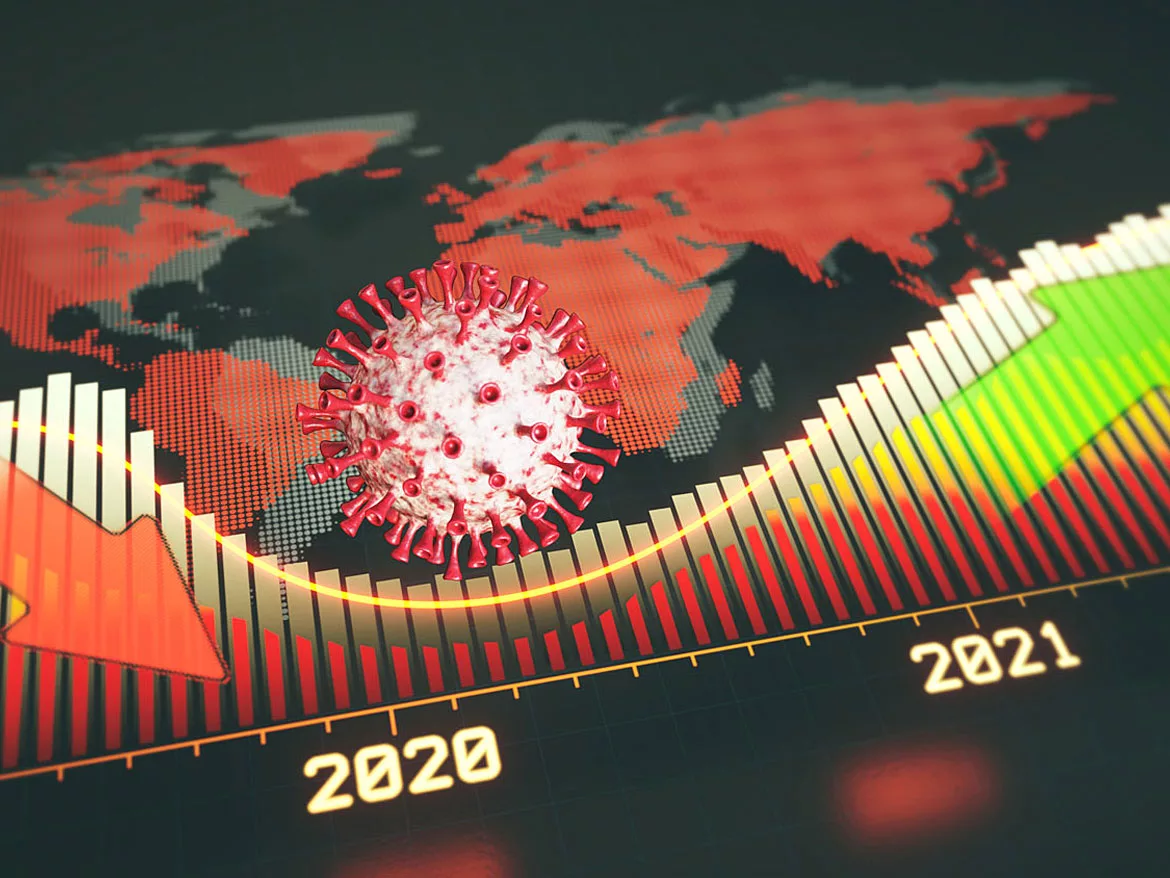Lessons from Our Recent Past Can Help Us Plan for What Lies Ahead

Exactly one year ago, the world’s focus was on the rapid spread of the novel coronavirus SARS-CoV-2, as we entered an unprecedented phase of global lockdown and skyrocketing deaths from a disease that spread across borders and jumped over oceans. ChemQuest, as a leading consulting firm serving the specialty chemicals industry, with a strong position in paints and coatings, quickly embarked on a campaign to assess the impact of Covid-19 and changes to the business climate from the perspective of its C-suite clientele via monthly surveys.
In our first survey, results of which were distributed on May 13, 2020, 75% of respondents predicted a U-shaped recovery — anticipating a significant decline in sales, beginning in Q2 and continuing through mid-2021. At the time, ChemQuest agreed that a single-digit contraction for the coatings industry was on par with year-over-year (2020 compared to 2019) industry results: 50% decline for April, -25% for May and -15% for June.
Stay-at-home restrictions affected certain industries more than others; for example, a double-digit decline in auto refinish sales as fewer miles were driven; plant shutdowns and persistent supply chain disruptions affected automotive OEM and other transportation segments by 40% to 50%; while Oil and Gas dropped 40%+ as low demand caused a collapse in oil pricing, forcing producers to cut CAPEX.
Happily, for most coatings markets, the forecasted U-shape turned out to be a V-shape, and following the sharp downturn in April and May 2020, most industry sectors returned to normalcy by Q3 2020. At the onset of the spring season, pandemic restrictions provided homeowners with ample time to take on painting projects, driving a dramatic rebound in architectural paints and stains, the largest coatings sector. On the operational side, manufacturers realized an immediate savings as business travel, including to trade shows, was indefinitely postponed. Savings on travel, however, was partially offset by higher expenses incurred for facility maintenance as essential businesses remained open (sometimes with extended hours), implementing expensive cleaning and sanitizing protocols in accordance with state mandates and CDC guidelines to protect customers, employees and the public from Covid-19.
One year later, we now know that the direct effects of Covid-19 shutdowns on the coatings’ end products were not as dramatic as originally feared. A clear trend of 2020 is that companies with more architectural exposure generally fared better than those with more industrial (especially more automotive) exposure. Low interest rates, lack of inventory of existing homes for sale, strong bounce in homebuilder sentiment, and a flight to suburbs have supported residential construction and remodeling into Q2 2021. Packaging coatings also appeared resilient as consumer demand for carry-out and delivered goods grew strongly during the pandemic. The overall quick recovery of the paint and coatings industry has not been limited to architectural — other markets, including transportation, began to rebound in Q4 2020 and continue to gain strength. With the expedited development and availability of at least three vaccines in the U.S. by year’s end, we collectively breathed a sigh of relief that Covid-related shutdowns and restrictions would be ending.
However, the question remained about the state of the supply chain that supports the industry. Would the raw materials needed for use in industries that had slammed shut be able to keep up with a sudden increase in demand? As quickly as their demand had diminished, many of the monomers, resins and additives used throughout the supply chain were in high demand once again. Industry tried to make up for lost production time, but producing enough materials to supply not just coatings, but other business units as well, became extremely challenging.
According to a global Chinese resin supplier, “local firms both in Europe and the U.S. were challenged to cope with a faster-than-expected rebound in demand. Fully utilized production capacities and older assets limited the ability to quickly increase production to meet demand. The rebound in the Chinese economy and demand for many chemical products in China have exceeded expectations as well. This rapid increase in local demand, coupled with high price levels, as well as import tariffs, and challenging and expensive logistics to overseas market limited the ability for many Chinese producers to substantially increase their supply in overseas markets vs. pre-crisis/pre-shortage levels.”
Clearly, the global and domestic demand was greater than supply could support. Respondents to ChemQuest’s 6th Covid Impact Survey in September 2020 began to note a sharp (53%) increase in their requirement for efficient domestic supply sources, with a 16% increase in demand for reliable suppliers. When asked about their biggest challenges moving into 2021, responses included,
- “Understanding likely demand in event of a vaccine.”
- “Understanding reductions in raw material capacity in the supply chain.”
- “Potential supply chain disruption.”
It was as if Uri, the winter storm that slammed the Gulf Coast in mid-February 2021, was brewing.
When a hurricane is forecast in the Gulf of Mexico with indicated trajectories that include the heart of petrochemical production areas, companies have time to turn off their processes and safely prepare for shutdown. An unpredicted and unprecedented inclement weather event like Uri, however, resulted in widespread freezing of production lines, loss of power, steam, hydrogen and nitrogen supplies. Restarting these plants requires extensive safety evaluations and costly (extensive) repairs. The same materials that were in short supply due to the previous Covid shutdowns were exactly what was required in order for operations to resume. Not exactly the circular economy we would like to be talking about.
According to Dow CFO Howard Ungerleider in March 2021, expectations were for Dow’s Texas assets to be operating at full rates at some point before the end of April. “That'll enable us to begin to fulfill the backlog of demand, which is pretty significant. While many of our businesses declared force majeure on products in the aftermath of the storm, our teams are certainly working hard to mitigate the operational and customer impact as much as possible. We continue to stay as close to our customers as possible as these product and supply chain impacts across the industry have clearly created extremely tight supply balances. As all units come up, we'll continue to work through the backlog of orders and the pent-up demand in each of our value chains.” There have been no further updates.
Concerns expressed from respondents to ChemQuest’s 7th and most current Covid Impact survey include the following:
- “As we see Covid rates decline and the broader economy starts to re-open, we are concerned about the availability of raw materials to keep pace with demand.”
- “The raw material situation is going to hamper/disrupt the recovery. Availability and inflation are the "new" problems.”
And lessons are stated as well:
- “Maintain healthy inventory levels based on regular demand and do not reduce inventory drastically.”
- “Importance of Chinese market has accelerated.”
- “Overall production capacities and supply chains are very slow to adapt to rapid changes in demand.”
- “Maintain a safe workplace and care about the well-being of your employees and demands of customers.”
- “Supply chain resiliency and security is a key component to success.”
The most difficult days of the past year are now upon us as the industry struggles to keep up with demand. Supply chain challenges are running high; strategy will need to change significantly in order to adapt to the new normal. ChemQuest CEO Dan Murad will provide “Strategic Insights for Mid-Decade Business Planning” in his Keynote Opening remarks at this September’s Coatings, Trends and Technologies Conference, September 8-9 in Lombard, IL. The events of 2020 have taught even the most seasoned industry practitioners, don’t merely expect the unexpected, plan for it. If your focus remains sharpened, you can remain above the fray — and ensure your operation is ready for what’s next.
Looking for a reprint of this article?
From high-res PDFs to custom plaques, order your copy today!





